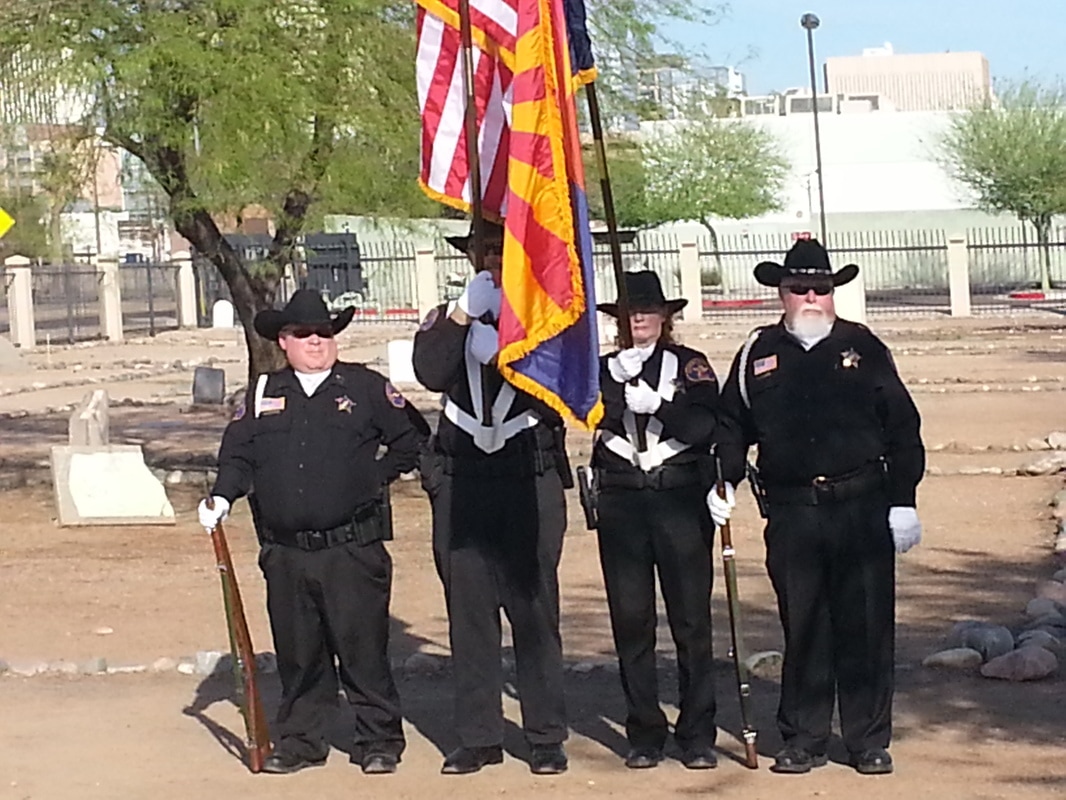Those who know me understand that while I’m generally a pretty squared-away guy, I am not Mr. Spit & Polish. Now, I’ve never shown up to a duty with an empty holster or anything, but in a company of “two is one, one is none” and “fifteen minutes early is on time” kind of guys, I’m the one blowing in exactly on time with my name badge slightly askew. So it is a delightful irony that I have recently joined the Phoenix Company’s Color Guard.
A Color Guard has a long history in military and police circles; in modern times they are an exclusively honorary exercise deployed for special occasions like parades, funerals and the like. They are the epitome of spit & polish, with white gloves and gold adornments, precision movement - and flags.
The flag was the centerpiece of the military practice that came to be the color guard. In more ancient times, armies depended on flying their colors (or flags) to rally around and maintain unit integrity. Due to its strategic importance, only senior men were put in charge of carrying and protecting the colors. Only men who had experience and discipline were entrusted with the carry and protection of the national and/or unit colors. From this came the practice of using the Color Guard for more ceremonial purposes, which is where we find it today.
The Color Guard represents the honor and dedication of those who serve, and especially in the case of funerals, a recognition of those who have served before. The Phoenix Company has performed Color Guard duties for gravesite ceremonies of territorial Rangers, Memorial Day events, and at the funeral of Lt. Col. Lynne Holliday, who was an influential Ranger who recently lost her battle with cancer. When given the opportunity to honor those who have come before me, whether by decades or just months, I am glad to carry the flag. And make sure my name badge is straight.

 RSS Feed
RSS Feed
